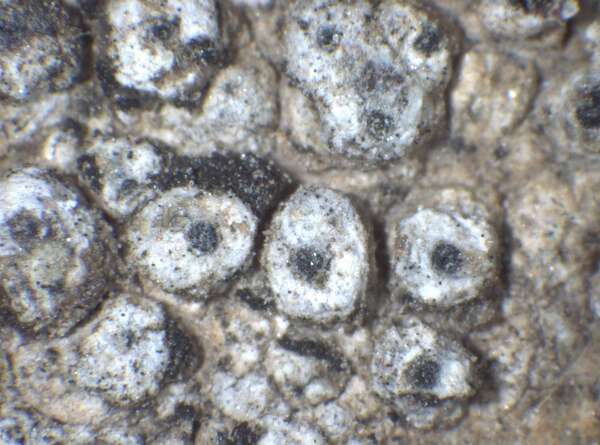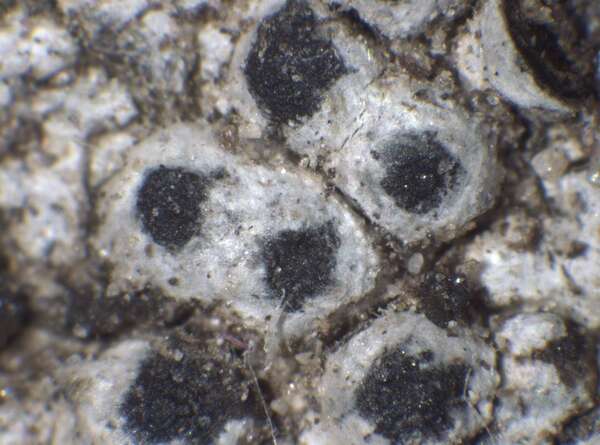Sporodictyon schaererianum A. Massal.
Flora, 35: 326, 1852.
Synonyms: Lecanora atra var. verrucoso-areolata Schaer.; Polyblastia schaereriana (A. Massal.) Müll. Arg.; Polyblastia subpyrenophora (Leight.) Zschacke; Polyblastia theleodes auct. non (Sommerf.) Th. Fr.; Verrucaria subpyrenophora Leight.; Verrucaria theleodes Sommerf. var. contigua Sommerf.
Distribution: N - TAA (Hafellner 2010), Lomb, Piem (Isocrono & al. 2004), VA (Piervittori & Isocrono 1999). C - Tosc (Hafellner 2010).
Description: Thallus crustose, episubstratic, well-developed, often consisting of c. 0.2-0.8 mm wide, at first subglobose, then sublobulate warts, pale grey to pale brown; cephalodia frequent, dark brown to black, forming flattened, irregular, granular, up to 1.5 mm wide aggregations. Perithecia black, forming (0.45-)0.7-1.2 mm wide projections, irregularly and incompletely covered by a thalline layer. Involucrellum 55-130 μm thick, strongly thickened around the often distinctly depressed ostiole, in the upper part merged with exciple, in the lowermost part diverging; hamathecium of periphyses and periphysoids, interascal filaments absent; hymenial gel hemiamyloid, I+ red (I+ blue at very low concentrations of I), K/I+ blue. Asci 8-spored, clavate, K/I-, fissitunicate, the wall thickened above, with an ocular chamber, dehiscent by extrusion of an endotunica to form a delicate rostrum. Ascospores muriform, dark brown when mature, the cell outlines often obscured, ellipsoid or often somewhat asymmetric, slightly curved with one end slightly wider, (48-)59-80(-90) x (29-)31-41(-50) μm. Photobiont chlorococcoid, Nostoc in the cephalodia. Spot tests: K-, C-, KC-, P-, UV-. Chemistry: without lichen substances. Note: a mainly circum-arctic to boreal-montane lichen found on hard calciferous rocks, often on dolomite, but also on calcareous sandstone and schist in cold-humid situations, with optimum above treeline. For further details see Savic & Tibell (2009).
Growth form: Crustose
Substrata: rocks
Photobiont: green algae other than Trentepohlia
Reproductive strategy: mainly sexual
Commonnes-rarity: (info)
Alpine belt: rather rare
Subalpine belt: rare
Oromediterranean belt: absent
Montane belt: extremely rare
Submediterranean belt: absent
Padanian area: absent
Humid submediterranean belt: absent
Humid mediterranean belt: absent
Dry mediterranean belt: absent
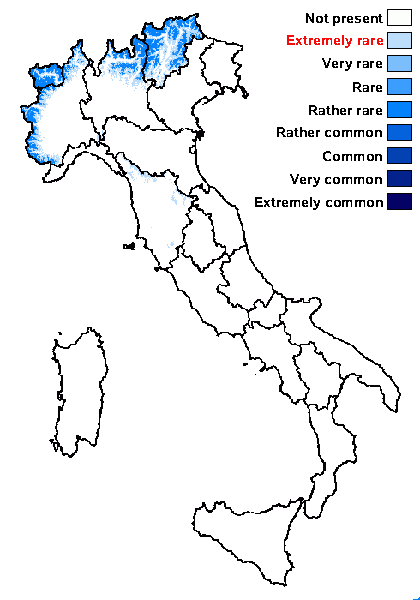
Predictive model
Herbarium samples
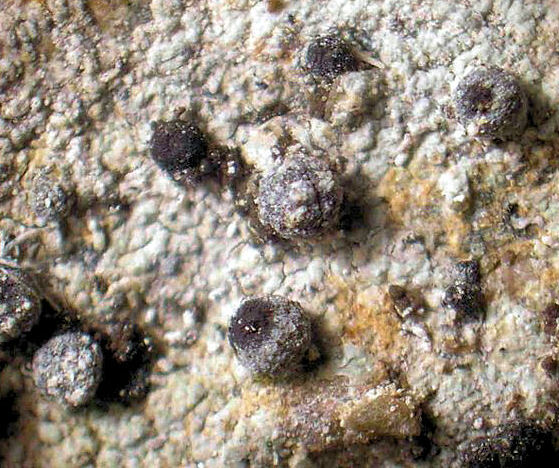

Curtis Randall Björk CC BY-SA 4.0
British Columbia, Clearwater Valley Date: 2010-11-03 On basalt cliff in waterfall sprayzone, in deep ravine in mixed conifer-deciduous forest; an uncertain species identification
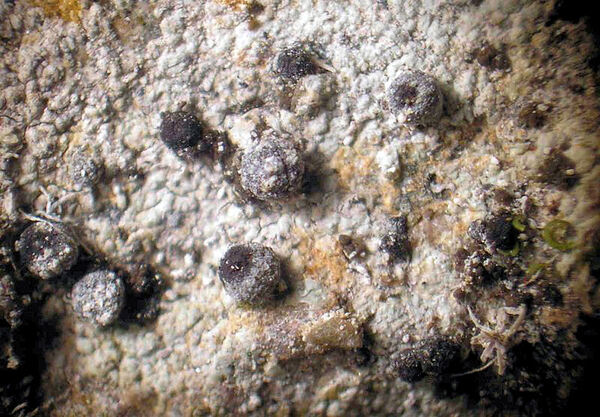

Curtis Randall Björk CC BY-SA 4.0
British Columbia, Clearwater Valley Date: 2010-11-03 On basalt cliff in waterfall sprayzone, in deep ravine in mixed conifer-deciduous forest;
an uncertain species identification
Growth form: Crustose
Substrata: rocks
Photobiont: green algae other than Trentepohlia
Reproductive strategy: mainly sexual
Commonnes-rarity: (info)
Alpine belt: rather rare
Subalpine belt: rare
Oromediterranean belt: absent
Montane belt: extremely rare
Submediterranean belt: absent
Padanian area: absent
Humid submediterranean belt: absent
Humid mediterranean belt: absent
Dry mediterranean belt: absent

Predictive model
| Herbarium samples |


Curtis Randall Björk CC BY-SA 4.0
British Columbia, Clearwater Valley Date: 2010-11-03 On basalt cliff in waterfall sprayzone, in deep ravine in mixed conifer-deciduous forest; an uncertain species identification


 Index Fungorum
Index Fungorum
 GBIF
GBIF
